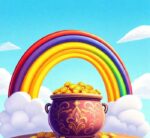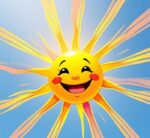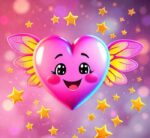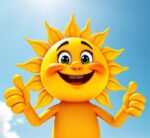- You are here:
- Home »
- words
- » Halloween Words That Start With O [LIST]
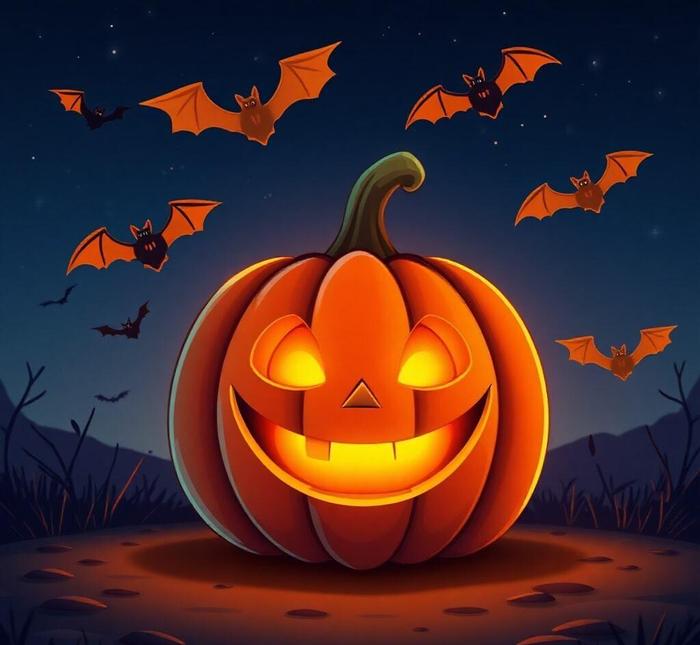
Halloween Words That Start With O [LIST]
Halloween is a time filled with spooky decorations, eerie costumes, and an abundance of themed vocabulary that adds to the festive atmosphere. While many Halloween-related words are familiar, such as ‘pumpkin’ or ‘ghost’, some terms may be more obscure. In this article, we’ll explore a list of Halloween words that start with the letter ‘O’. From creatures of the night to symbols of the season, these words help enrich the Halloween experience and offer a fun way to expand your Halloween vocabulary. Whether you’re planning a party, crafting decorations, or simply enjoying the spooky season, these words will add a touch of eerie flair to your celebrations.
Starting with the letter ‘O’, this list includes everything from ominous objects to mythical beings that fit right into the Halloween spirit. Some of these terms may surprise you, while others may already be part of your spooky lexicon. With each word, we’ll explore its meaning, how it ties into the Halloween tradition, and why it deserves a spot in your holiday vocabulary. Get ready to discover some fun and eerie words that start with ‘O’!
Halloween Words That Start With O
1. Occult
The occult involves hidden or secret knowledge, often related to supernatural or magical events. It’s closely tied to practices such as witchcraft, astrology, alchemy, and necromancy. The occult is a frequent theme in Halloween folklore, as it deals with forces beyond human comprehension.
Examples
- The occult refers to practices and beliefs in supernatural forces, often associated with magic, witchcraft, and the paranormal.
- Many horror films explore the theme of the occult, portraying characters who dabble in dark rituals and ancient secrets.
2. Ominous
Ominous describes something that gives a sense of foreboding or that suggests future misfortune. It often evokes feelings of dread or fear, making it a fitting word for Halloween. Whether it’s the shadowy figures or eerie sounds, ominous events heighten the tension and suspense of Halloween night.
Examples
- The ominous clouds in the sky signaled that something bad was about to happen.
- Her ominous warning about the haunted house made us think twice before entering.
3. Outfit
An outfit is a complete set of clothing worn for a particular occasion or purpose. On Halloween, outfits are often centered around costumes that reflect spooky or mythical creatures, like witches, monsters, and ghosts. The outfit plays a major role in creating the atmosphere and fun during Halloween festivities.
Examples
- She wore an elaborate vampire outfit, complete with fangs and a long black cape.
- For Halloween, kids often pick fun and spooky outfits to wear to trick-or-treat.
4. Ogre
An ogre is a mythical monster, often described as a large, hideous creature. In many cultures, ogres are known for their intimidating appearance and terrifying behavior, making them a popular figure in Halloween stories and themes. They are frequently portrayed as villains in fairy tales and folklore.
Examples
- In many folklore tales, ogres are depicted as large, fearsome creatures who live in dark forests.
- The children were terrified when they saw the giant ogre in the haunted house.
5. Overcast
Overcast refers to a sky covered with clouds, blocking out the sun and often creating a gray, gloomy ambiance. On Halloween, an overcast sky can contribute to the spooky and mysterious atmosphere, adding an extra layer of eeriness to the holiday’s celebrations.
Examples
- The sky grew overcast as the storm clouds began to gather, setting the perfect eerie mood for Halloween night.
- An overcast sky on Halloween night can add to the mysterious and spooky atmosphere of the holiday.
6. Oracle
An oracle is a person or a tool believed to provide divine or supernatural predictions. In Halloween lore, oracles are often associated with mystical powers and are typically used by witches or seers to foretell events, adding an element of mystery and fate to the holiday.
Examples
- In ancient Greece, an oracle was believed to offer prophecies and guidance, often from the gods.
- The witch used her crystal ball to act as an oracle, foretelling the future of those who dared ask.
7. Otherworldly
Otherworldly refers to something that belongs to another realm or dimension, beyond the ordinary world. It is often used to describe supernatural beings, spirits, or phenomena that are strange and unsettling, perfect for creating a Halloween atmosphere filled with ghosts, aliens, and supernatural occurrences.
Examples
- The abandoned house seemed otherworldly, as if it were from another dimension.
- The ghostly figures floating in the air gave the entire scene an otherworldly atmosphere.
8. Octopus
An octopus is a sea creature known for its eight long tentacles and ability to blend into its environment. While not typically linked to Halloween, its eerie appearance makes it a fitting character for spooky decorations or as part of a Halloween monster theme, especially when imagined as a terrifying sea creature.
Examples
- The giant octopus in the haunted aquarium frightened visitors with its many writhing tentacles.
- In some Halloween decorations, an octopus is reimagined as a sea monster rising from the depths of the ocean.
9. Obsidian
Obsidian is a dark, glass-like volcanic rock that has been used for centuries to make tools, weapons, and ceremonial items. In Halloween traditions, obsidian is often associated with dark magic or supernatural power, making it a common material for witches’ tools, amulets, and ancient artifacts.
Examples
- The witches used obsidian stones to create dark and powerful spells.
- The knife, made from obsidian, gleamed menacingly under the full moon during the ritual.
10. Oblivion
Oblivion refers to a state of being forgotten or unknown, often associated with death or the afterlife. In Halloween lore, it represents the eerie idea of souls or spirits fading into nothingness. The concept of oblivion is often used to invoke feelings of dread about what happens after death or what lies beyond.
Examples
- The haunted mansion seemed to exist in a state of oblivion, as if it were lost to time.
- The souls of the departed were said to wander in oblivion, unable to find peace.
11. Opal
Opal is a precious gemstone known for its shifting colors and mystical allure. In Halloween themes, opals are often linked with magic and mystery, as their iridescent glow makes them seem enchanted or otherworldly. They are sometimes used in jewelry or as talismans for witches or supernatural beings.
Examples
- The opal necklace was said to hold magical properties, glowing faintly under the moonlight.
- She wore a dark opal ring that seemed to pulse with an eerie energy on Halloween night.
12. Ouija Board
A Ouija board is a flat board marked with letters, numbers, and symbols, used in attempts to communicate with spirits. It is a classic Halloween prop, often featured in supernatural stories or movies. The idea of using a Ouija board to summon or speak to the dead adds an element of danger and intrigue to Halloween festivities.
Examples
- The group nervously gathered around the Ouija board, hoping to make contact with spirits.
- The Ouija board moved on its own, spelling out a chilling message from the beyond.
13. Overrun
Overrun refers to a situation where something has been overwhelmed or taken over. In Halloween settings, this term can describe haunted places or spooky locations that are filled with spirits, monsters, or other frightening elements, creating a chaotic and terrifying atmosphere.
Examples
- The haunted house was overrun with ghosts, causing visitors to flee in terror.
- By the time we arrived at the graveyard, it was overrun with fog, making it nearly impossible to see.
14. Obsession
Obsession describes a powerful and often unhealthy fixation on something or someone. In Halloween tales, obsession often drives characters to dangerous or dark actions, such as seeking immortality, pursuing forbidden knowledge, or becoming consumed by a supernatural force.
Examples
- The vampire’s obsession with immortality led him to commit dark and twisted acts.
- Many Halloween stories revolve around characters who become obsessed with the supernatural.
15. Overkill
Overkill refers to an excessive amount of something, usually to the point of being overwhelming or unnecessary. In Halloween contexts, overkill can describe overly elaborate decorations, exaggerated horror themes, or exaggerated effects that go beyond what is needed to create a spooky atmosphere.
Examples
- The haunted attraction featured overkill in its creepy special effects, making it even scarier.
- When decorating for Halloween, sometimes people go for overkill, adding too many creepy props and decorations.
16. Outcast
An outcast is a person who has been rejected or excluded from a group or community. In Halloween themes, outcasts are often depicted as individuals who do not fit into society, such as monsters, witches, or creatures of the night. These characters can evoke sympathy or fear, depending on the story.
Examples
- The werewolf was an outcast from society, shunned by everyone who feared his true nature.
- Many Halloween stories feature characters who are outcasts, forced to live on the fringes of society.
17. Overnight
Overnight refers to something that happens suddenly or unexpectedly within a short period of time, often overnight. In Halloween stories, transformations, hauntings, or supernatural events are often said to occur overnight, emphasizing the mysterious and unpredictable nature of Halloween magic.
Examples
- The haunted mansion was transformed overnight into the most terrifying attraction in town.
- In Halloween legends, some curses or transformations happen overnight, forever changing the victim.
18. Occasion
An occasion is a special event or time for celebration. Halloween is a major occasion for people to dress up in costumes, attend parties, and engage in spooky activities. It’s a time to celebrate all things eerie and supernatural, with many Halloween traditions revolving around gatherings and themed events.
Examples
- Halloween is an occasion for dressing up in costumes and celebrating with friends and family.
- For the occasion, they decorated their home with creepy cobwebs and flickering candles.
Historical Context

Halloween, with its rich history that spans centuries, incorporates a variety of words that hold deep cultural and historical significance. Many of the traditions and terms associated with the holiday, such as costumes, treats, and festivities, have evolved over time, rooted in ancient customs and folklore. Among these, certain Halloween-related words that start with the letter ‘O’ carry intriguing historical weight.
One of the most prominent terms that begins with ‘O’ is “october,” the month when Halloween is celebrated. While not directly a Halloween word, the very setting of Halloween is inextricably linked with October. This month holds historical significance in various cultures, marking the end of harvest and the beginning of the darker half of the year. October 31st was chosen for All Hallows’ Eve in part because it was the night before All Saints’ Day, a Christian observance. But it also marked a time in pagan traditions when the veil between the living and the dead was believed to be thin, making it a time for honoring ancestors and the supernatural. Thus, the historical roots of Halloween are intertwined with the seasonal change in October, where both ancient rituals and modern-day festivities converge.
Another important Halloween-related word that starts with ‘O’ is "Omen," a term often associated with signs or portents of future events, particularly those linked to death or the supernatural. The notion of omens—whether good or bad—has been deeply woven into Halloween lore. In many cultures, the appearance of certain animals (like owls or black cats) was considered an omen, often thought to signal an impending shift in fate, or the presence of spirits from the afterlife. Historically, this ties back to ancient beliefs in the supernatural and the influence of the unseen forces that ruled over life and death. On Halloween night, many still enjoy exploring the mysteries of omens through various rituals, like reading tarot cards, searching for signs in nature, or practicing divination, all of which hark back to these age-old traditions.
Finally, “overseers” or the concept of figures that watch over or control spirits in the afterlife also appears in various Halloween contexts, particularly in cultures that emphasize ancestral worship or the guidance of spirits. While not as widely recognized in contemporary Halloween celebrations, these figures represent the historical role of guardians between realms, whether as gods, goddesses, or spirits of the dead themselves.
Word Origins And Etymology
When we examine the etymology of Halloween words starting with ‘O,’ we find a fascinating journey through time and language that reveals how these words have transformed alongside the evolution of Halloween customs.
Take the word "occult," for example. The word "occult" derives from the Latin occultus, meaning "hidden" or "secret," and was used to describe things that were not easily perceived or understood by ordinary people. In the context of Halloween, it refers to things relating to the supernatural, esoteric practices, and paranormal phenomena, all of which are often celebrated or explored during this time of year. The use of “occult” during Halloween likely stems from the ancient belief that the veil between the living and the dead was thinnest during this time, allowing hidden forces or beings to pass into the mortal realm. While the term "occult" has expanded in modern times to encompass various forms of mysticism and dark arts, its Halloween associations are rooted in the idea of the unknown and the mystical.
Another word tied to Halloween that starts with "O" is "oracle." This term has roots in Latin, where oraculum meant a divine revelation or prophecy. An oracle was believed to be a conduit for communicating with gods or spirits, offering guidance for important life decisions or revealing the future. Halloween’s connection to oracles is evident in the practice of fortune-telling, tarot card reading, and other divinatory traditions that have become popular in contemporary Halloween celebrations. These practices seek to tap into a mystical, often otherworldly, source of wisdom, much like the ancient oracles, and have been woven into Halloween customs as a way to tap into the supernatural energies associated with the holiday.
“Onyx” is another word with historical roots tied to both Halloween and the occult. The word “onyx” comes from the Greek onyx, meaning "fingernail" or "claw," referring to the stone’s appearance. Onyx has long been associated with protection from evil spirits and has been used in amulets and talismans to ward off negative forces. In the context of Halloween, onyx is often linked with the darker, more mysterious aspects of the holiday—such as witches’ spells or protection against spirits—further emphasizing the supernatural and mystical themes of Halloween.
Common Misconceptions
Many Halloween words starting with ‘O’ have been surrounded by misconceptions, especially in the context of their supernatural meanings. The holiday itself, with its blend of ancient customs, folklore, and modern-day commercialism, has contributed to the transformation and sometimes distortion of these terms.
One such word is “Ogre.” While many people associate ogres with Halloween due to their appearances in pop culture—often as monstrous, fearsome creatures—the origin and meaning of the word is more complex. The word "ogre" originates from the French ogre, and its earliest appearances were not particularly tied to Halloween. Instead, ogres were often depicted as wicked giants in fairy tales and folklore, particularly in works like Puss in Boots and Hansel and Gretel. Over time, ogres became part of the Halloween lexicon due to their association with monsters, but they are not typically the central focus of the holiday, despite their popularity in costume choices.
Another common misconception involves the word “owl.” In many cultures, owls are considered to be witches’ familiars or symbols of death and the supernatural. However, this notion can be misleading. While owls have long been associated with mystery and the occult, particularly in European folklore, they were also regarded as wise and revered creatures in other cultures. Ancient Greeks, for example, saw owls as sacred to Athena, the goddess of wisdom. The association of owls with Halloween primarily comes from their nocturnal nature and their eerie, haunting calls. However, it’s important to remember that they are not solely tied to Halloween’s darker elements and have had a more nuanced place in myth and legend.
Finally, “Omen” is often misunderstood as something always negative or evil. While many think of omens as foretelling doom or misfortune, in historical contexts, omens were sometimes seen as positive signs, representing guidance from the gods or spirits. The concept of omens during Halloween often carries a superstitious connotation, where certain signs—like a black cat crossing your path—are feared. However, many cultures viewed omens as neutral, simply signaling a change or important event to come, not necessarily something to dread.
Conclusion
The Halloween words that start with the letter ‘O’ reveal a fascinating mix of historical significance, linguistic evolution, and cultural interpretations. From the origins of “October” as a time of harvest and spiritual significance to the mystical allure of words like "occult" and "oracle," these terms help deepen our understanding of Halloween’s ancient roots. While some words, like "ogre" and "owl," have evolved and become entwined with modern-day misconceptions, they remain integral to the holiday’s identity. Halloween’s legacy continues to be shaped by both historical context and the imaginations of those who celebrate it today, weaving together ancient beliefs and contemporary practices into a celebration that spans the realms of the living and the supernatural.


